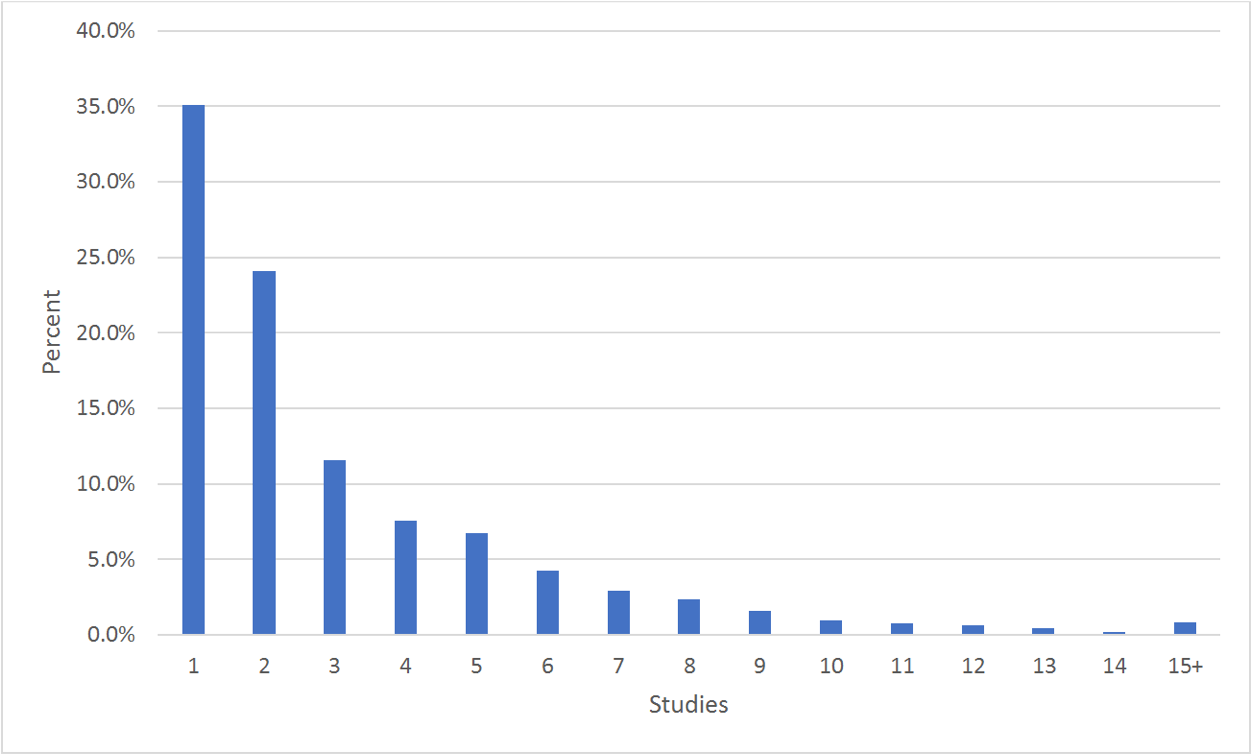Understanding the Investigator Usage of Individual Pharmaceutical Companies; the Pfizer Case
With Open Payments it is possible for Pfizer to better understand its own investigator usage pattern and how that pattern may differ from the practices of other pharmaceutical companies.
The Sunshine Act mandates that all payments by pharmaceutical and medical device companies to a range of healthcare providers be reported in the Open Payments database. One major consequence of this database is to make the investigator relationships with individual pharmaceutical companies transparent to others. An example can be found in the clinical trial payments captured in the research payments file of Open Payments. These data are providing a level of detail about the clinical investigator landscape not accessible until recently. For example, it is now possible to understand how individual pharmaceutical companies use their investigators. Pfizer data are illustrative.
We examined how often Pfizer used their individual investigators between 2014 and 2016, the three full years for which data are currently available to the public. To do this we first identified investigators used by Pfizer in 2014 and followed their usage through the end of 2016. Of course these investigators could have been used by Pfizer during time frames not covered by the analysis.
With Open Payments it is possible for Pfizer to better understand its own investigator usage pattern and how that pattern may differ from the practices of other pharmaceutical companies. A case in point is the one time investigator. Pfizer does a much better job than the rest of the industry avoiding the use of investigators who never do a second clinical trial for any pharmaceutical company. At the overall US industry level, 30% of all investigators who conducted any clinical trial for any pharmaceutical company in 2014 failed to do a second clinical trial between 2014-2016. For Pfizer, thirty five percent of 2014 sites are not used a second time. A more detailed review in Open Payments of these one-time Pfizer investigators highlights Pfizer’s success in avoiding true one-time investigators. Pfizer used 1,214 investigators only once between 2014-2016. However, most of these investigators, 891 worked on clinical studies for other sponsor companies. Only 323 never did a second clinical trial for any other company, a percentage much lower than the industry average.
Pfizer’s Use of US Investigators, 2014-2016

Behind the Buzz: Why Clinical Research Leaders Flock to SCOPE Summit
February 7th 2025In this episode, we meet with Micah Lieberman, Executive Conference Director for SCOPE Summit (Summit for Clinical Ops Executives) at Cambridge Innovation Institute. We will dive deep into the critical role of collaboration within the clinical research ecosystem. How do we bring together diverse stakeholders—sponsors, CROs, clinical trial tech innovators, suppliers, patients, sites, advocacy organizations, investors, and non-profits—to share best practices in trial design, program planning, innovation, and clinical operations? We’ll explore why it’s vital for thought leaders to step beyond their own organizations and learn from others, exchanging ideas that drive advancements in clinical research. Additionally, we’ll discuss the pivotal role of scientific conferences like SCOPE Summit in fostering these essential connections and collaborations, helping shape the future of clinical trials. Join us as we uncover how collective wisdom and cross-industry partnerships are transforming the landscape of clinical research.
Phase III Trial Data Show Subcutaneous Pembrolizumab as Noninferior to IV Keytruda
March 31st 2025Subcutaneous administration of pembrolizumab with chemotherapy demonstrated a nearly 50% reduction in patient chair and treatment room time while maintaining efficacy and safety endpoints compared to intravenous Keytruda.
Reaching Diverse Patient Populations With Personalized Treatment Methods
January 20th 2025Daejin Abidoye, head of solid tumors, oncology development, AbbVie, discusses a number of topics around diversity in clinical research including industry’s greatest challenges in reaching diverse patient populations, personalized treatment methods, recruitment strategies, and more.